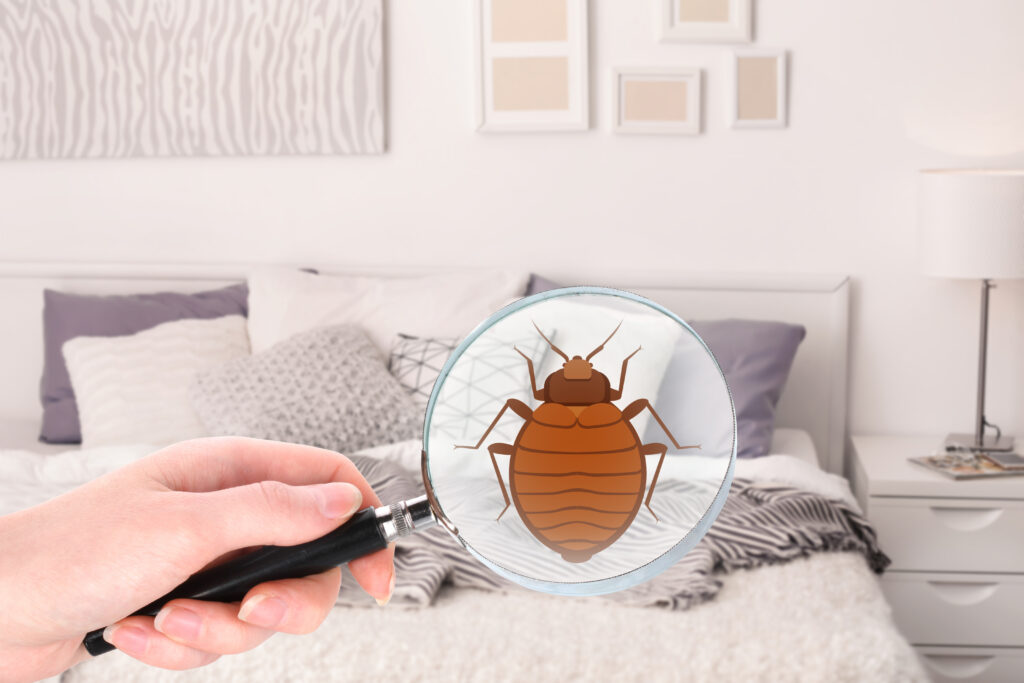A1 Bed Bug Removal Houston: Relied On Extermination Solutions
Recognizing the Lifecycle of Parasites for Targeted Control Methods
Recognizing the lifecycle of parasites is a fundamental facet of reliable insect monitoring techniques. Via a much deeper understanding of just how insects evolve and prosper, customized control techniques can be made to resolve certain points in their lifecycle, eventually leading to even more effective insect administration end results.
Value of Understanding Parasite Lifecycle
Recognizing the lifecycle of bugs is essential for developing effective and targeted control approaches in parasite management. By understanding the numerous phases a bug goes with from egg to adult, insect control specialists can recognize at risk factors in the lifecycle where treatment can be most successful.
Additionally, identifying the certain ecological problems required for each stage of the insect's lifecycle can lead choices on habitat alteration or exemption techniques to minimize and interrupt the lifecycle bug populaces. This expertise allows pest monitoring experts to execute proactive actions rather than relying entirely on responsive treatments, resulting in even more lasting and lasting bug control services. Ultimately, an extensive understanding of pest lifecycles encourages insect control specialists to customize their methods efficiently, reducing ecological effects and making best use of control outcomes.
Secret Stages in Bug Growth
To properly implement targeted control methods in insect monitoring, an essential element exists in comprehensively identifying and recognizing the vital phases in bug growth. Insect advancement typically is composed of numerous vital stages that are critical for their lifecycle and management. The initial stage is the egg stage, where parasites lay eggs that later hatch right into larvae. Larvae then proceed into pupae, a stage where they go through metamorphosis before becoming grown-up bugs. Understanding these phases is vital as it helps in identifying vulnerable points in the lifecycle where control steps can be most reliable.

Susceptabilities in Bug Lifecycle
Throughout the various stages of a parasite's lifecycle, unique vulnerabilities arise that can be strategically targeted for reliable control steps. One critical vulnerability exists in the egg stage, where pests are commonly a lot more susceptible to particular insecticides or biological control representatives as a result of their soft outer shell, making them much easier targets for intervention. Additionally, the nymph or larval phase provides vulnerabilities as bugs undertake rapid growth and advancement, calling for high power consumption that can be made use of by interrupting their food resources or presenting development preventions. Pupal phases, identified by stability and makeover, provide a window for targeted control through physical obstacles or certain therapies that prevent effective appearance. Adult insects, while much more durable due to their reproductive capability, can still be prone during mating or egg-laying activities, which can be interfered with through scent traps or sanitation methods. Recognizing these susceptabilities in the parasite lifecycle is vital for creating effective and precise control methods that successfully handle insect populations while lessening environmental impact.
Carrying Out Targeted Control Steps

Carrying out targeted control measures usually entails a multi-faceted method. This may consist of habitat click this adjustment to make the atmosphere much less congenial to parasites, such as removing standing water this article for insect control or securing entry points for rats. Furthermore, biological control methods can be used, where all-natural predators or microorganisms are presented to keep pest populaces in check.
Chemical control, such as the cautious application of chemicals, is an additional typical method. It is essential to use these materials deliberately to decrease ecological influence and potential harm to non-target species - A1 bed bug extermination houston. Integrated Parasite Administration (IPM) techniques that integrate different control procedures in a worked with and lasting fashion are often the most reliable in attaining lasting parasite management objectives. By applying targeted control actions based upon a comprehensive understanding of parasite lifecycles, parasite populaces can be properly regulated while reducing dangers to human health and the environment.
Enhanced Parasite Administration Practices

In addition, the incorporation of organic control representatives, such as natural predators or microorganisms of parasites, can help minimize dependence on chemical pesticides and advertise a more balanced ecological community. Implementing physical barriers and catches can additionally belong to enhanced insect monitoring practices, providing safe and targeted remedies for pest control. Additionally, using scents and various other semiochemicals can interfere with pest mating patterns and communication, resulting in decreased bug populaces with time.
Conclusion
Finally, comprehending the lifecycle of insects is vital for reliable insect management approaches. By determining essential stages in parasite growth and vulnerabilities in their lifecycle, targeted control measures can be implemented to decrease insect populations. Improved insect monitoring methods can help in reducing the reliance on broad-spectrum pesticides and advertise more a fantastic read lasting and eco-friendly pest control methods. This expertise plays a vital duty in maintaining healthy and balanced environments and agricultural efficiency.
Understanding the lifecycle of parasites is vital for creating effective and targeted control approaches in pest management. By comprehending the various phases a parasite goes through from egg to adult, bug control professionals can identify vulnerable factors in the lifecycle where treatment can be most successful. Inevitably, an extensive understanding of parasite lifecycles encourages parasite control practitioners to tailor their strategies effectively, decreasing ecological influences and taking full advantage of control results.
By executing targeted control steps based on an extensive understanding of bug lifecycles, bug populations can be efficiently controlled while decreasing threats to human wellness and the setting.
By determining essential stages in pest development and susceptabilities in their lifecycle, targeted control steps can be executed to minimize parasite populaces.